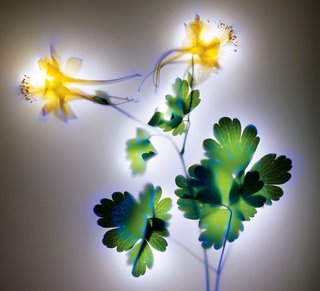Monday, July 27, 2009
30 Days of Pork – a true story
Amanda Kelso is the daughter of a friend of mine at work. He told me about Amanda’s “project” some time ago and thought it remarkable. I happened to stumble upon it again while researching alternative medicines made from pork.

Here is Amanda’s story in a nutshell – In 2006 she was a 34 yr old ad agency executive living in San Francisco. She also was a vegetarian for the past 12 years. Amanda decided to visit the dark side of culinary spectrum and make an event out of it. 30 days of pork was born and she was going to chronicle it on Flickr. She was going to have pork every day for a month. You can see her project here+
Here is Amanda’s story in a nutshell – In 2006 she was a 34 yr old ad agency executive living in San Francisco. She also was a vegetarian for the past 12 years. Amanda decided to visit the dark side of culinary spectrum and make an event out of it. 30 days of pork was born and she was going to chronicle it on Flickr. She was going to have pork every day for a month. You can see her project here+
It was a bold move and very interesting in a voyeuristic way. The word got out and people had something to say about it. Cheers and scathing criticism flowed freely. Today of you search “30 days of pork” you will see some of the aftermath.
Here is another blogs take on Amanda’s adventure. It’s a quick and interesting read.
Let’s see . . . you could try 30 days of . . . .
Wednesday, July 22, 2009
High Voltage Photography
I recently read about this guy Robert Buelteman and is unique photos in my Wired magazine. At first glance I thought the pictures we good but as I read the article and looked at them again they seemed even more impressive.

“Buelteman's technique is an elaborate extension of Kirlian photography (a high-voltage photogram process popular in the late 1930s) and is considered so dangerous and laborious that no one else will attempt it—even if they could get through all the steps.
Buelteman begins by painstakingly whittling down flowers, leaves, sprigs, and twigs with a scalpel until they're translucent. He then lays each specimen on color transparency film and, for a more detailed effect, covers it with a diffusion screen. This assemblage is placed on his "easel"—a piece of sheet metal sandwiched between Plexiglas, floating in liquid silicone. Buelteman hits everything with an electric pulse and the electrons do a dance as they leap from the sheet metal, through the silicone and the plant (and hopefully not through him), while heading back out the jumper cables. In that moment, the gas surrounding the subject is ionized, leaving behind ethereal coronas. He then hand-paints the result with white light shining through an optical fiber the width of a human hair, a process so tricky each image can take up to 150 attempts.”

“Buelteman's technique is an elaborate extension of Kirlian photography (a high-voltage photogram process popular in the late 1930s) and is considered so dangerous and laborious that no one else will attempt it—even if they could get through all the steps.
Buelteman begins by painstakingly whittling down flowers, leaves, sprigs, and twigs with a scalpel until they're translucent. He then lays each specimen on color transparency film and, for a more detailed effect, covers it with a diffusion screen. This assemblage is placed on his "easel"—a piece of sheet metal sandwiched between Plexiglas, floating in liquid silicone. Buelteman hits everything with an electric pulse and the electrons do a dance as they leap from the sheet metal, through the silicone and the plant (and hopefully not through him), while heading back out the jumper cables. In that moment, the gas surrounding the subject is ionized, leaving behind ethereal coronas. He then hand-paints the result with white light shining through an optical fiber the width of a human hair, a process so tricky each image can take up to 150 attempts.”
Friday, July 17, 2009
Cards of the future
Time for a little technology update. Here is an application/technology that uses a web cam. The application “recognizes” a card, like a business card then uses what it knows about the card like size position recognizable patterns to project an image on the card. It’s not really on the card, but when you watch it on your computer screen it looks like it’s on the card.
Confused? here are two implementations of this technology – enjoy
You have to go to the Engadget web page to see this other one, but it gives you a better idea of how it works. click here
.jpg)